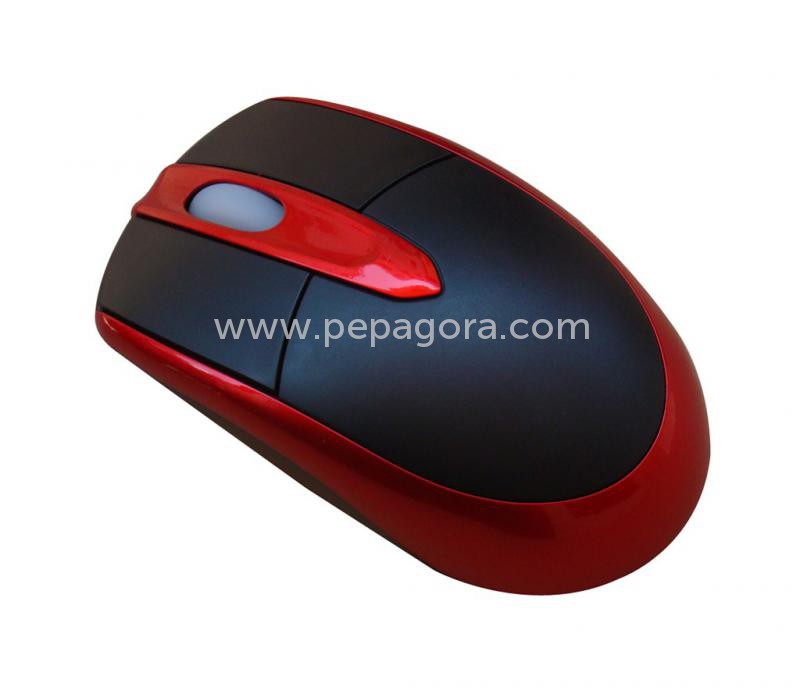
Floret G
Product Range
Fact Sheet
- Verified
- Location:Karnataka, India
- Business Type:Distributor / Wholesaler
- Main Products:Mouse, Keyboard, RAM, G - Card
- Reviews & Rating:
Mouse
In computing, a mouse is an input device that detects two-dimensional motion relative to a surface. This motion is typically translated into the motion of a pointer on a display, which allows for fine control of a graphical user interface.
- FOB PriceINR-125-1250-Pieces
- Min Order Quantity25-Pieces
- Payment TermsT/T,Credit Card,Cheque
Other Details
Use in games
Mice often function as an interface for PC-based computer games and sometimes for video game consoles.
First-person shooters
|
|
Due to the cursor-like nature of the crosshairs in first-person shooters, a combination of mouse and keyboard provides a popular way to play first person shooter games. Players use the X-axis of the mouse for looking (or turning) left and right, and the Y-axis for looking up and down. Many gamers prefer this primarily in first person shooter games over a gamepad or joypad because it provides a higher resolution for input, so they are able to make small, precise motions in the game more easily. The left button usually controls primary fire. If the game supports multiple fire modes, the right button often provides secondary fire from the selected weapon. Games with only a single fire mode will generally map secondary fire to ironsights. In some games, the right button may also provide bonus options for a particular weapon, such as allowing access to the scope of a sniper rifle or allowing the mounting of a bayonet or silencer.
Gamers can use a scroll wheel for changing weapons (or for controlling scope-zoom magnification, in older games). On most first person shooter games, programming may also assign more functions to additional buttons on mice with more than three controls. A keyboard usually controls movement (for example, WASD for moving forward, left, backward and right, respectively) and other functions such as changing posture. Since the mouse serves for aiming, a mouse that tracks movement accurately and with less lag (latency) will give a player an advantage over players with less accurate or slower mice.
Many games provide players with the option of mapping their own choice of a key or button to a certain control.
An early technique of players, circle strafing, saw a player continuously strafing while aiming and shooting at an opponent by walking in circle around the opponent with the opponent at the center of the circle. Players could achieve this by holding down a key for strafing while continuously aiming the mouse towards the opponent.
Games using mice for input are so popular that many manufacturers make mice specifically for gaming. Such mice may feature adjustable weights, high-resolution optical or laser components, additional buttons, ergonomic shape, and other features such as adjustable CPI.
Many games, such as first- or third-person shooters, have a setting named "invert mouse" or similar (not to be confused with "button inversion", sometimes performed byleft-handed users) which allows the user to look downward by moving the mouse forward and upward by moving the mouse backward (the opposite of non-inverted movement). This control system resembles that of aircraft control sticks, where pulling back causes pitch up and pushing forward causes pitch down; computer joysticksalso typically emulate this control-configuration.
After id Software's Doom, the game that popularized first person shooter games but which did not support vertical aiming with a mouse (the y-axis served for forward/backward movement), competitor 3D Realms' Duke Nukem 3D became one of the first games that supported using the mouse to aim up and down. This and other games using the Build engine had an option to invert the Y-axis. The "invert" feature actually made the mouse behave in a manner that users now regard as non-inverted (by default, moving mouse forward resulted in looking down). Soon after, id Software released Quake, which introduced the invert feature as users now know it. Other games using the Quake engine have come on the market following this standard, likely due to the overall popularity of Quake.
Technical Specifications
A mouse typically controls the motion of a pointer in two dimensions in a graphical user interface (GUI). The mouse turns movements of the hand backward and forward, left and right into equivalent electronic signals that in turn are used to move the pointer.
The relative movements of the mouse on the surface are applied to the position of the pointer on the screen, which signals the point where actions of the user take place, so that the hand movements are replicated by the pointer.[23] Clicking or hovering (stopping movement while the cursor is within the bounds of an area) can select files, programs or actions from a list of names, or (in graphical interfaces) through small images called "icons" and other elements. For example, a text file might be represented by a picture of a paper notebook, and clicking while the cursor hovers this icon might cause a text editing program to open the file in a window.
Different ways of operating the mouse cause specific things to happen in the GUI:[23]
- Click: pressing and releasing a button.
- (left) Single-click: clicking the main button.
- (left) Double-click: clicking the button two times in quick succession counts as a different gesture than two separate single clicks.
- (left) Triple-click: clicking the button three times in quick succession.
- (left) Quadruple-click: clicking the button four times in quick succession.
- Right-click: clicking the secondary button.
- Middle-click: clicking the tertiary button.
- Drag: pressing and holding a button, then moving the mouse without releasing. (Using the command "drag with the right mouse button" instead of just "drag" when one instructs a user to drag an object while holding the right mouse button down instead of the more commonly used left mouse button.)
- Button chording (a.k.a. Rocker navigation).
- Combination of right-click then left-click.
- Combination of left-click then right-click or keyboard letter.
- Combination of left or right-click and the mouse wheel.
- Clicking while holding down a modifier key.
- Moving the pointer a long distance: When a practical limit of mouse movement is reached, one lifts up the mouse, brings it to the opposite edge of the working area while it is held above the surface, and then replaces it down onto the working surface. This is often not necessary, because acceleration software detects fast movement, and moves the pointer significantly faster in proportion than for slow mouse motion.
Images







